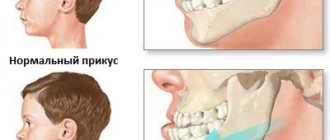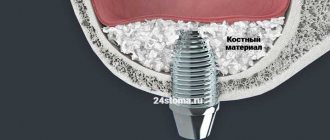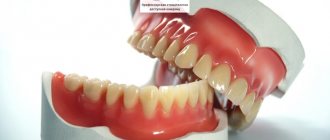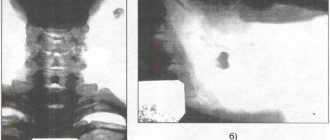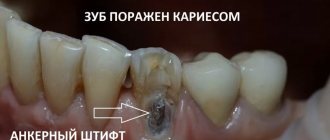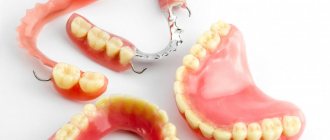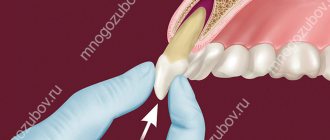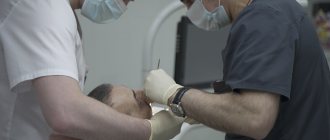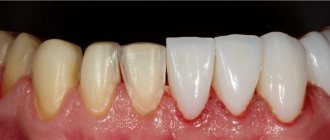International professional organizations unanimously recommend that all mothers begin breastfeeding immediately after birth - from the first hours of a newborn baby's life - and continue it for the next two years or more [1].
Breastfeeding is a physiological process that benefits not only the baby, but also his mother.
However, is it safe to breastfeed a child if the mother has undergone surgery or any other invasive intervention - dental treatment, colonoscopy, endometrial biopsy - using painkillers and sedatives?
Before surgery or procedure
Ask your doctor about your medications
- Talk with your healthcare team about the different types of medications you will receive before, during, and after your surgery or procedure. If you discuss this in advance, the team can provide you with the support you need throughout your care.
- Tell your child's pediatrician that you will be having a procedure for which you may need anesthesia (medication to make you sleep) or other medications.
If you have questions about any of the medications you will receive, the following resources may help:
- Infant Risk Center www.infantrisk.com 806-352-2519 Here you can find information about using medications during pregnancy and breastfeeding.
- TOXNET Drug and Lactation Database (LactMed) www.toxnet.nlm.nih.gov/newtoxnet/lactmed.htm Here you can find information about medications and other chemicals that your baby may get from breast milk.
Express and store breast milk
- If possible, express and store breast milk before your surgery or procedure. By stocking up ahead of time, you can be sure that your baby is getting your breast milk even if you are not there.
- If you expect to stay in the hospital longer than 24 hours (1 day), arrange for a family member or friend to collect your expressed breast milk each day and take it home. Breast milk can be stored in a thermos bag with ice packs for 24 hours. Make sure that milk containers are always lined with ice packs. Open the thermos bag as little as possible to keep the milk cold.
- Once your friend or relative brings milk home, it should be used immediately, refrigerated, or frozen.
- If you are unable to take milk home daily, you can store it at one of the following MSK locations: Memorial Hospital (MSK's main hospital) 1275 York Avenue (between East 67th Street and East 68th Street) New York, NY 10065
- David H. Koch Center for Cancer Care 530 East 74th Street New York, NY 10021
- Josie Robertson Surgery Center 1133 York Avenue New York, NY 10065
Breast milk can be stored there for up to 4 days.
For more information about storing breast milk safely, visit the Centers for Disease Control and Prevention (CDC) website: www.cdc.gov/breastfeeding/recommendations/handling_breastmilk.htm.
to come back to the beginning
Anesthesia in dentistry
Anesthesia in dentistry can be local or general. Local anesthesia is when only the area where the intervention is planned is numbed, while the patient is conscious. But general anesthesia in dentistry, or in other words, general anesthesia, is carried out using narcotic analgesics introduced into the patient’s body by inhalation or intravenously. During general anesthesia, the patient's consciousness turns off.
Local anesthesia for tooth extraction, dental treatment - For local anesthesia, carpule syringes and carpules containing an anesthetic solution are now used. The quality of anesthesia with such a syringe is much higher than with a conventional disposable syringe. In addition, carpule anesthesia needles are many times thinner than conventional disposable syringes, which means that the injection will not be as painful.
— What should I do if I am afraid of anesthesia?
Indeed, an anesthetic injection can be painful. The pain will depend both on the patient’s pain sensitivity threshold and on the doctor’s anesthesia technique.
To reduce the discomfort from an anesthetic injection, you can ask the doctor to first use an anesthetic spray to numb the mucous membrane at the injection site (most often they use Lidocaine spray or analogues).
There are also medications that can reduce fear and anxiety before an upcoming trip to the dentist. Among the over-the-counter drugs, we can highlight the drug Afobazol, which is especially convenient for those who need to make several trips to the dentist, because... This drug is taken in a course (1 package for 20 days). The drug has a good sedative/anti-anxiety effect, but it does not cause drowsiness. You need to start drinking Afobazol 5-7 days before your visit to the dentist - in this case, the effect of the drug will be greater.
You can also use tinctures of valerian, motherwort, Corvalol, valocardine. However, it is also advisable to take these drugs in a course, starting a few days before visiting the doctor. Plus, in addition to a sedative effect, these drugs have a hypnotic effect, which is not very good for motorists and working people.
— What local anesthetics exist in dentistry?
The most modern anesthetics are based on Articaine. This active substance is used in such anesthetics as Ultracaine, Ubistezin, Septanest and others. Anesthetics of the articaine series are more effective than lidocaine - 1.5-2 times, and Novocaine - 5-6 times.
A big advantage of articaine-based anesthetics is that they also act when you need to numb the area of inflammation. Indeed, with purulent inflammation, novocaine practically ceases to act at all, and the activity of lidocaine noticeably decreases.
Most anesthetics, in addition to the main analgesic component (for example, articaine), also contain vasoconstrictors, such as adrenaline or epinephrine. The latter components, due to the narrowing of blood vessels at the injection site, can reduce the leaching of the anesthetic, and this leads to an increase in the strength and duration of anesthesia.
- Ultracaine Ultracaine is produced in France in 3 possible versions, which will differ in the presence/absence of epinephrine in the composition, as well as its concentration: Ultracaine anesthetic carpule “ultracaine DS forte” - with an epinephrine concentration of 1: 100,000, “ultracaine DS” - with an epinephrine concentration 1:200,000, “ultracaine D” – without epinephrine, without preservatives.
- Ubistezin Carpula anesthetic Ubistezin A good anesthetic, produced (Germany). The composition of Ubistezin is absolutely no different from similar forms of Ultracain. Two forms of release - Ubistezin (with an epinephrine concentration of 1:200,000), Ubistezin forte (with an epinephrine concentration of 1:100,000).
- Septanest Septanest has been used in dentistry for a very long time. This anesthetic has 2 release forms with adrenaline concentrations of 1:100,000 and 1:200,000. However, this anesthetic (unlike Ultracain and Ubistezin) contains a larger number of preservatives (both sodium metabisulfite and EDTA), which have a powerful allergenic effect.
- Scandonest Anesthetic from Septodont (France) based on Mepivacaine 3%. Does not contain vasoconstrictor components or preservatives. Scandonest in dentistry is used mainly only in patients at risk who cannot take anesthetics with adrenaline and epinephrine, as well as in patients with bronchial asthma. A complete analogue of Scandonest 3% is the anesthetic Mepivastezin 3%, produced (Germany).
On the day of the operation or procedure
Plan your day to breastfeed or express milk immediately before your surgery or procedure. This will help keep your milk supply up and prevent pain and breast engorgement (when the breasts become full of milk and become hard and swollen).
What to take with you to surgery or procedure
- Your breast pump with power supply
- Everything you need to express milk (receiving milk from the mammary glands)
- Milk storage containers
- A thermos bag with ice packs for storing expressed breast milk
Our biomedical technician will examine your breast pump to ensure it is safe. This can usually be done at the bedside, but the breast pump may need to be taken to another room for a while to be checked.
If your breast pump stops working or fails inspection, the MSK locations below have several breast pumps you can use.
- Memorial Hospital (MSK's main hospital) 1275 York Avenue (between East 67th Street and East 68th Street) New York, NY 10065
- David H. Koch Center for Cancer Care 530 East 74th Street New York, NY 10021
- Josie Robertson Surgery Center 1133 York Avenue New York, NY 10065
Talk to your healthcare team
On the day of your surgery or procedure, tell your healthcare team that you are breastfeeding (or lactating) and that you do not want to stop.
to come back to the beginning
Contraindications to epidural anesthesia during childbirth
- Patient's informed refusal
- Blood coagulation disorder downward
- Intolerance to local anesthetics.
- Purulent lesion of the skin at the puncture site
- Diseases of the cardiovascular system (rhythm disturbances, heart defects, the presence of artificial valves, pacemakers). In this situation, the possibility of performing epidural analgesia is assessed individually and agreed with the cardiac surgeon.
- Liver failure
- Demyelinating diseases of the nervous system and peripheral neuropathy
- Tattoo at the puncture site.
If there are contraindications to epidural pain relief, then there is always the possibility of alternative labor pain relief.
After surgery or procedure
The anesthesia is quickly eliminated from the body. If you have questions about the anesthesia you received, contact your anesthesiologist (the doctor who gives you the anesthesia).
You should start expressing milk again as soon as you are awake and able to do so. If you need help, ask someone on your health care team. You can also ask family or friends for help while you recover from surgery or procedure.
While you're away from your baby, plan to pump every 3 to 4 hours, or at least as often as you would normally feed your baby. Frequent pumping will help you maintain your breast milk supply until you are able to breastfeed again.
If you have questions about any of the medications you will receive after your surgery or procedure, ask your healthcare provider. You can also browse the websites or call the phone numbers listed in the Before Your Surgery or Procedure section.
to come back to the beginning
Breastfeeding after caesarean section
It is known that in the first 2-3 days after birth, the degree of penetration of drugs administered to the mother into breast milk is the greatest [2,3].
In the first day after birth, there are significant gaps between the cells of the mammary gland - lactocytes [4], which allow large molecules from the mother's bloodstream - proteins, lipids, immunoglobulins - and cells to penetrate into breast milk. Consequently, drugs circulating in the mother’s blood during this period, like other molecules, also quickly and en masse penetrate into the secretion of the mammary gland.
Immediately after birth, the concentration of drugs in milk is comparable to their concentration in the mother's blood.
Over time - on the second, third days after birth and beyond - the gaps between the cells gradually decrease and, accordingly, the penetration of drugs also decreases, but still it does not stop completely [2-4].
Any medicine administered to the mother - an anesthetic, muscle relaxant, analgesic - inevitably passes into breast milk. However, when standard doses are used, drug concentrations do not reach significant levels and probably do not have a negative effect on the child [5].
When considering initiation of breastfeeding after operative delivery, it is important to evaluate the individual characteristics of the mother and her baby. In most cases, the benefits—early initiation of breastfeeding, the entry of many beneficial substances into the child’s body, and the establishment of contact between mother and baby—exceed the possible harm [5,6].
All women after surgical birth are recommended to start breastfeeding as early as possible - as soon as possible [5,6].
Additional Resources
Centers for Disease Control and Prevention (CDC) Proper Handling and Storage of Breast Milk www.cdc.gov/breastfeeding/recommendations/handling_breastmilk.htm Provides information on how to safely handle and store breast milk.
Breastfeeding USA www.breastfeedingusa.org Provides breastfeeding information and support.
International Lactation Consultant Association www.ilca.org 888-452-2478 Find an IBCLC to find an International Board-Certified Lactation Consultant Lactation Consultant®, IBCLC) and working close to where you live.
United States Lactation Consultant Association https://uslca.org/ Find an IBCLC to find an International Board-Certified Lactation Consultant Consultant, IBCLC) and working near your place of residence.
